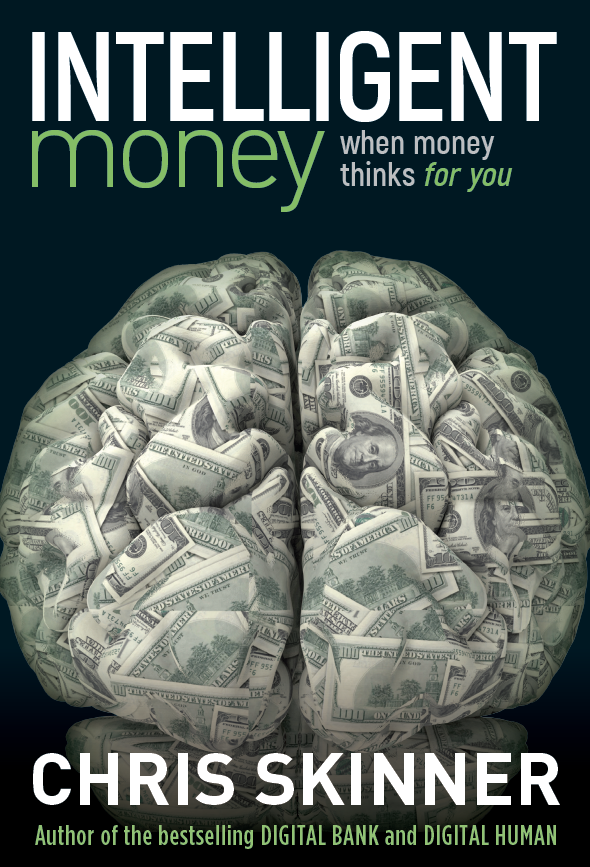
Flying back from Oslo after the SWIFT Nordics Conference, I was reflecting on the blockchain discussion we had. I chaired the discussion which was titled: “Blockchain: from hype to real world applications” and was joined by Vytautas Karalevicius from Spectro Finance, Lasse Meholm of Nordea and Colin Kwan from Magnr. It is clear that there are a number of major areas for applying the blockchain technologies emerging but, right now, it seems to me there are five big ones.
Smart Contracts
This is the biggest area where we are seeing transformation, with some seeing this as more revolutionary for the legal industry than banking or other areas. This is because law is being digitalised. Right now, look at any legal structure and there’s a raft of paperwork involved. That’s good for the solicitors, barristers and litigators as keeping track of their paper trails is half the cost of any exchange, but if we digitise all those contractual instruments, then everything changes. This is what firms like Stampery are focused upon – being the digital notary of choice – because you can record something on a shared ledger and, once recorded, it is irrefutable digital proof that this thing happened at that time on this date between these counterparties. This could be anything from a marriage vow to a divorce proceeding; a house sale to a land reclamation; a purchase of a diamond to an insurance claim for the loss of a diamond; and anything else that involves digital proof. Provenance is the killer app for blockchain protocol and it is why companies like Everledger are winning all the plaudits, as early examples of how compelling digital proof though smart contracts can be. After all, if it can wipe out half the costs and people involved in administering our legal and litigation systems, then unemployed lawyers are surely a good thing?
Smart Assets
Recording the transacting of anything with a clear date and time stamp becomes even more compelling when we apply this to assets, especially assets in trade finance. Think of all those components being brought and sold in the supply chains of the world, and then think about all of those components being recorded in near real-time on a shared ledger. That’s smart assets in the supply chain. We have talked for a long time, for example, about real-time Treasury workstations but you can never have real-time when bills of lading and letters of credit have to be recorded and documented against asset movements. Digitalise the bills of lading and letters of credit and you suddenly have a much smarter view of the world. This is already revolutionising trade finance, working capital and supply chain management, with companies like Tradle and Wave leading the way. The key is that a smart asset system cannot just record the asset in the supply chain, it’s serial numbers and value, but any other information we need to know about that asset. Who is it coming from and where is it going to; how it relates to other assets in the supply chain; the shipper and receiver of the goods at port or airport; the components and component value that comprise the asset; tax and government clearance information; and more. That’s why it’s a smart asset tracking system and, for banks competing in the internet age, this becomes the competitive battleground. After all, we all talk about banking differentiation being based upon information enrichment in the future. Therefore, a bank that is rich in data, can be rich in turning that data into information for their corporate clients. This will be a big area of competitive development over the next decade.
Clearing and Settlement
In the shorter term, clearing and settlement is proving to be the most active use case area for blockchain in banking, mainly because it gives a short-term win with real cost savings. Clearing and settlement costs billions and, according to Santander’s 2015 report LINK, it is estimated that moving this into a digital record, near real-time and over the internet, will save the industry $20 billion a year in more in overhead costs due to D+3. D+3, or T+3, is the three-day clearing and settlement cycle common to most investment markets today. D+3 is the reason we have custodial services (CSDs), central counterparty clearing systems (CCPs) and complex collateral management as intra-day, end of day and after three days, we have to ensure all counterparty balances are matched, reconciled and resolved across global trading system involving thousands of investors, day traders, pensions funds, market makers, assert managers and more. It is complex stuff and not necessarily resolved by blockchain in its entirety. For example, there’s some advantage in having D+3 when you have a financial meltdown. Nevertheless, many firms are leading the charge to digitalise the clearing and settlement structures from Blythe Masters’ Digital Asset Holdings with the Hyperledger to Overstock with T0, along with many other key and emerging players such as Epiphyte, Clearmatics and SETL. Eventually, there will be a new cleating system created out of the blockchain and what intrigues me the most is who will be running it.
Payments
SWIFT is developing projects around blockchain for payments transactions, as are many of the banks, with R3 being the lead player in such activities. R3, backed by 42 of the world’s largest banks, has already started experiments with Microsoft’s Azure-based Blockchain-as-a-Service to develop Erethreum as a bank-to-bank global transaction system. It’s an experiment today, but tomorrow … this is going to be a critical development area, and it’s not just for global bank-to-bank transfers but any exchange of value over the internet peer-to-peer. In fact, the emerging value exchange models between players in Africa is highly likely to result in digital currencies being created that avoid the high exchange costs of Western Union or other remittance players. However, there is one factor that begs the question: is blockchain really suitable for payments? Scalability. The bitcoin blockchain processes transactions within ten minutes if you’re lucky, and in an hour or more if you’re not. Each transaction, when you load mining costs into the system, costs about $6 and this will increase once all bitcoins have been mined, as a fee-based system will be required to run the blockchain. I have yet to see anyone convincingly skirt around the scale and cost factors of blockchain in payments, which means that we don’t yet have a faster and cheaper system than what we already have today in the form of STEP2, SWIFT and ACH systems. We might tomorrow, but there’s still a fair crack of technical work and experimentation to be made before I’m convinced that we can process trillions of transactions a second on a blockchain protocol.
Digital Identity
Having said that, we do need some form of technology as a by-product of blockchain to enable us to do trillions of transactions a second for near-free as the Internet of Things (IoT) is coming. You cannot have IoT without IoV (the Internet of Value); and IoV needs MoIP (Money over Internet Protocol) to operate. So there will be a payments structure developed for MoIP as a foundation for IoT, and that MoIP system will enable machine-to-machine commerce. Then this might be the way in which blockchain feeds into scalability of payment transactions. If Digital Identities are recorded on blockchain protocol, then my things can have authorisation to transact on my behalf. In other words, I have an identity recorded on a shared ledger, and then can add devices to my identity. Over time, I add smart objects too, from my shoes to my fridge to my car to my heating to my spectacles to my anything. This is where the most likely breakthrough will come before payments, as companies such as Shocard and Onename are developing ideas in this space fast.
So there you have the big five developments in blockchain use cases in finance today:
- Smart Contracts
- Smart Assets
- Clearing and Settlement
- Payments
- Digital Identity
There are others but, for now, focus your thinking on these as they’re going to give you the short-term gains and long-term benefits.
Chris M Skinner
Chris Skinner is best known as an independent commentator on the financial markets through his blog, TheFinanser.com, as author of the bestselling book Digital Bank, and Chair of the European networking forum the Financial Services Club. He has been voted one of the most influential people in banking by The Financial Brand (as well as one of the best blogs), a FinTech Titan (Next Bank), one of the Fintech Leaders you need to follow (City AM, Deluxe and Jax Finance), as well as one of the Top 40 most influential people in financial technology by the Wall Street Journal's Financial News. To learn more click here...






















